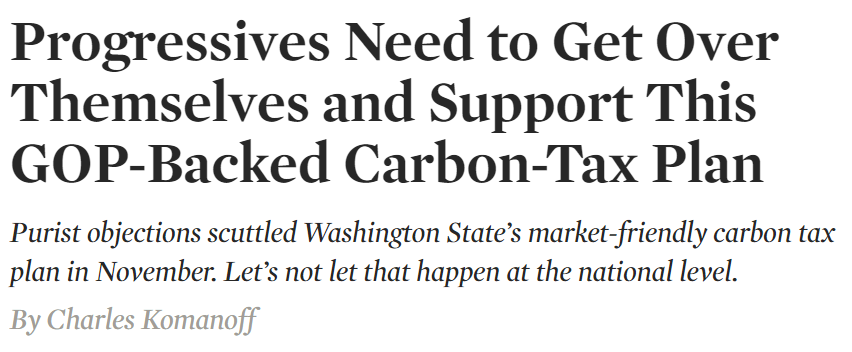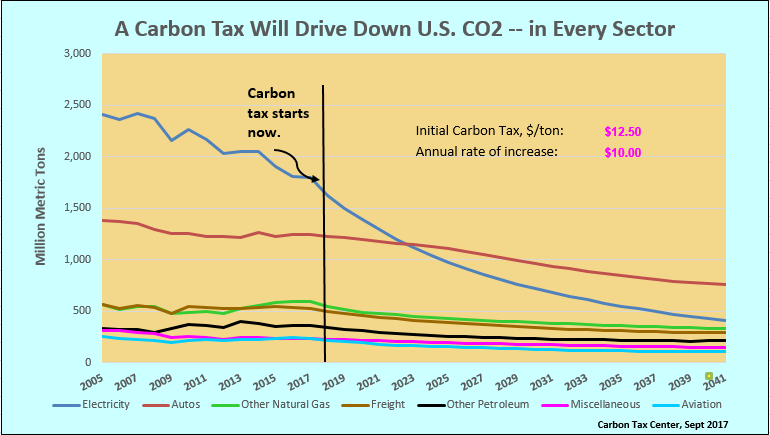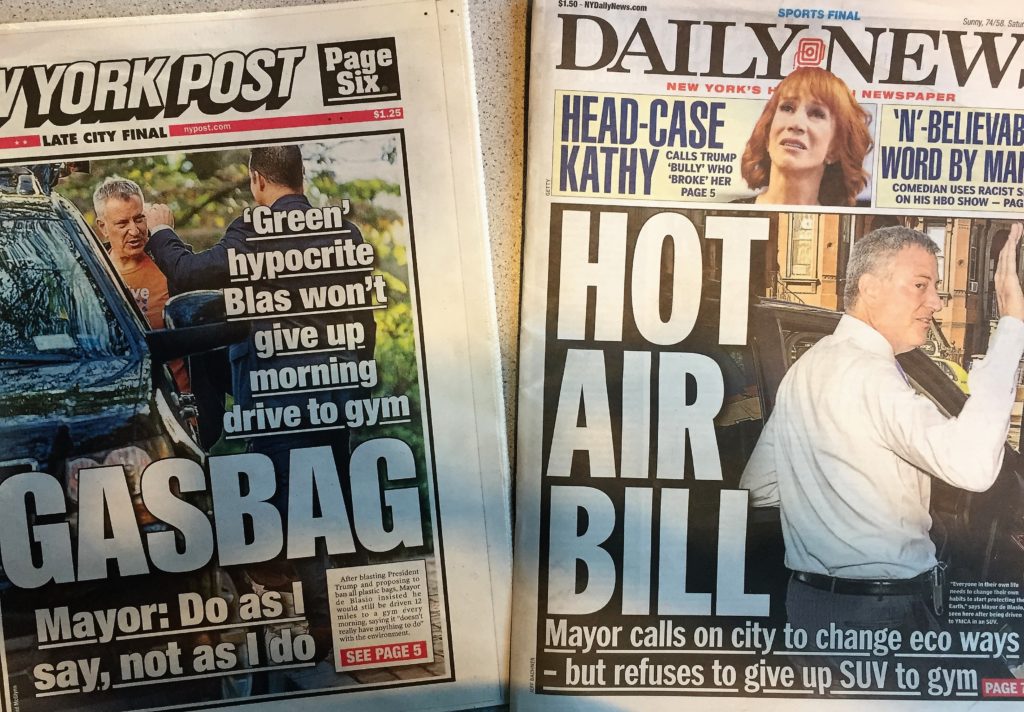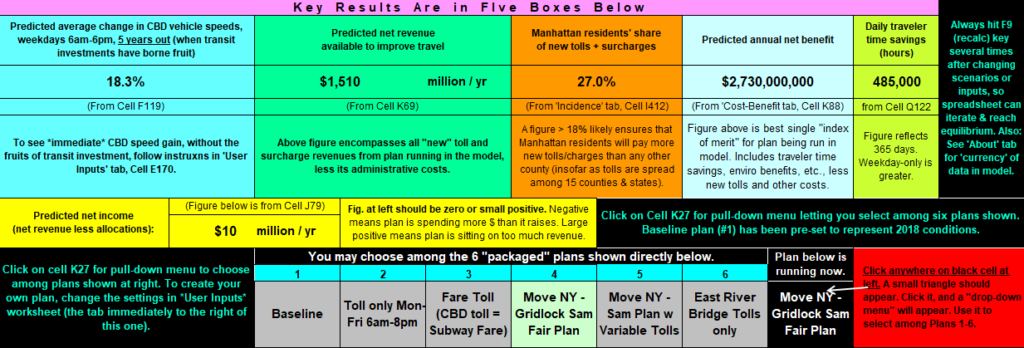Everyone’s 2017 was eventful . . . and disruptive . . . and difficult.
From January into April, we, like many of you, marched and protested while trying to see a way forward for carbon taxes under a denialist U.S. regime.

We didn’t write this headline, but we agreed with it. The Left’s opposition to the WA carbon tax was a grievous mistake.
We spoke at gatherings across New York City. We published an article in The Nation magazine decrying left-green dogmatism that doomed the campaign in Washington state to enact the USA’s first carbon tax. We allied ourselves with the Climate Leadership Council’s audacious Republican-branded carbon tax proposal. We published a 120-page guide to state carbon tax prospects compiled by Yoram Bauman, the economist-activist who spearheaded the Washington referendum.
By then we were 100 days into a new administration whose cruelty and heedlessness were sickening. At a climate march in New Jersey, we called the complicit U.S. Republican Party “a racket to restore patriarchy, extractionism and white supremacy.” This truth grew even sharper a month later when Congressional Republicans cheered Trump’s repudiation of the Paris Climate Agreement.

Outputs from CTC’s carbon-tax model: download and use!
We kept working. We retooled CTC’s carbon tax spreadsheet model, incorporating the latest data, snazzing up the user interface and graphics, and for the first time apportioning refinery emissions among their “downstream” sectors — driving, freight and air travel (jet fuel). With this change and the ongoing shrinkage in coal-fired power generation, driving is gaining on electricity for the dubious distinction of most climate-damaging U.S. sector.
Meanwhile, a campaign for congestion pricing in New York City — fees charged to vehicles driven into and within gridlocked city centers — was gathering steam amid meltdowns in the city’s mass transit system, worsening traffic gridlock, and a void of political leadership. When Gotham’s SUV- and helicopter-riding mayor crowned himself leader of state-and-local-government resistance to the White House, we upbraided him on live radio, setting off a media frenzy that continues today.

Our radio call-in touched off a roiling debate about the gap between public postures and personal acts.
But our criticism went beyond tabloid fodder; it pointed to the persistent gap between public postures and personal acts — a breach that carbon taxes could help repair.
Our pivot from national carbon tax campaigning accelerated in August, after Gov. Andrew Cuomo unexpectedly announced his support for congestion pricing. Shortly after, the analytics team advising the governor reached out to me: Would I help them deploy my monster congestion pricing model to score different congestion pricing plans?
Of course I said yes and plunged into massive updating and retooling of the model, which continues as I write this post. Details of the governor’s proposal are expected in a few days and the public debate and legislative donnybrook will almost certainly extend for several months. The fight is important, not just for the sustainability of New York and other global cities, as I argued last week on Streetsblog, but to finally establish in the USA the principle at the heart of carbon taxing: that the most surefire and equitable way to reduce pollution is to make polluters pay for it. [Addendum: The details can be found in my January Streetsblog post, The Fix NYC Congestion Pricing Plan Looks Solid — If Cuomo Aims High, which includes a link to the governor’s panel’s report.]
CTC’s program for 2018
At the national level, the main event by far for carbon taxing this year is to bring an end to Republican climate denialism. This could mean routing the GOP in the midterms, or some other path to repudiating the party’s nearly monolithic rejection of science-based climate policy and its all-out embrace of fossil fuels. It may also require, in the states, dismantling the gerrymandering that, combined with Democrats’ “clustering” in urban precincts, entrenches Republicans’ control of Congress far beyond their share of Americans’ votes.
I’m sorry to say that the notion of a bipartisan federal carbon tax is barely on life-support, as we wrote here last week, decrying the passivity of the Climate Solutions Caucus — the Noah’s Ark-like conclave that we formerly touted as a possible incubator for a revenue-neutral carbon tax. Nevertheless, CTC will continue our technical support and policy advice to members of Citizens Climate Lobby and to the Climate Leadership Council. But we harbor no illusions that current Republican officeholders will provide political leadership or even partnership for meaningful carbon pricing legislation.

Excerpt from “Results” section of our “BTA” spreadsheet model. A key goal for early 2018: A congestion pricing win for NYC that establishes the “polluter pays” principle in the USA.
There’s a corollary: it may be time to rethink revenue-neutral carbon taxes. As much as we love carbon fee-and-dividend, with its powerful logic of linking rising carbon taxes to rising “green checks,” the revulsion against Trump and the G.O.P. could make it harder to sell progressives on programs with a seemingly middle-of-the-road cast. We also can’t dismiss arguments by Frank Ackerman and others that the “fat tail” of climate worst-cases demands national mobilization on a scale that only government action can generate.
Along with political action and some soul-searching, CTC is primed this year to
- Monitor and parse actual carbon emission reductions in states, sectors and countries with carbon pricing, including the 9 RGGI states;
- Assess and fact-check claims of economies decarbonizing without carbon pricing;
- Expand our networking with state and national carbon tax advocates in the U.S. and overseas;
- Seek common ground on carbon taxing with environmental and climate justice advocates;
- Explore alliances with progressives working to meld carbon pricing with “mobilization” strategies;
- Seek out Republicans-conservatives who have genuine interest in non-token carbon taxes;
- Gain a better understanding of the possibilities and limits in fossil fuel divestment and litigation campaigns;
- Continue improving and disseminating our carbon tax spreadsheet model;
- Restock CTC’s Web site;
- Keep writing op-eds and magazine pieces promoting carbon taxes;
- Use our blog to post commentary on unfolding political developments, policy proposals and energy trends.
As we head into the new year, we thank you for your past support and your partnership. Contributions to support our work in 2108 (please use this link) will, as always, play a valuable role in keeping CTC edgy, timely and forward-focused.

Drew Keeling says
The goals and foci announced here for this year are ambitious and welcome. Regular readers will require little reminder, but this is also a good time to mention what a superb and thorough information resource the CTC site provides. Probably, I would say, it is by far and away the most useful single site for carbon taxation related topics on the internet. So, first and foremost, Charles, thanks for all you’ve done so far and for planning to keep up this good work going forward, even while also contributing insights and resources to the not unrelated issue of congestion pricing.
It is important to acknowledge, as this blog page forthrightly does, that carbon taxation has long been and remains a “hard sell.” It was not easy to encourage adoption when John Anderson proposed an increased gasoline tax in 1980, or during consideration of the Clinton BTU tax in 1993, and the hurdles have become higher -in some ways much higher- since then. Taking a few minutes to further ponder the reasons for this may, however, help stimulate thinking about possible means of overcoming public disinterest and political reluctance.
Probably most significant is the general lack of knowledge about what a revenue neutral tax even is, and the related ease with which people’s minds can become confused about it. One path toward helping reverse that lack of clear understanding might be through secondary school and undergraduate education. As far as I know, Pigovian taxes are still a topic in first year college economic courses, covered as part of “market failures” and economic policy approaches, etc. Perhaps a specific, targeted “outreach” to economics instructors could help instill more carbon tax examples in lectures, problem sets, exams etc.
Secondly, politicians are well-known for short term thinking, and for preferring splashy tokenist displays over more effective yet more mundane policy reforms. But, politicians are also susceptible to public preferences, ergo better educated voters could help boost lawmakers’ willingness to work on actual carbon tax legislation.
Finally, part of improving education (of both the general public and of policymakers) could quite aptly be to increase awareness of how carbon emissions reductions are a political issue that is both very immediate and very long term. Carbon dioxide from human-caused sources stays in the atmosphere for many decades or centuries (in practical political terms this amounts to eternity). And, whatever the “budget” for how much further CO2 increase we can afford without that leading to intolerable climate change for coming generations, each ppm addition to global CO2 reduces the remaining value of that budget by a ppm. Furthermore, while the climate effects of increased CO2 are (and probably to some extent always will be) uncertain, the CO2 accumulation itself is capable of quite exact and continual measurement. This is something I learned about many decades ago, as a child in a family of scientists dealing with the carbon cycle and climate, and (unlike climate science generally) it is not particularly difficult to grasp. Even those who are, or who claim to be, unpersuaded by climate science, typically accept the now longstanding standard CO2 measurement data. This quantitative solidity might be harnessed to help bolster support for a carbon tax. As a particular for instance, I am thinking of graphical illustrations of how “time is working against us” if we continue to postpone higher, more socially responsible, carbon prices. Something along the lines of the nuclear war doomsday clock or the 6th Avenue national debt running tally. Perhaps one could show the “sand running out” of a “safe climate” carbon budget hour glass, whether set to correspond to +2˚ C or at some other metric. Or, as one climate scientist has suggested, show the increasing “steepness” of the “ski slope” to zero emissions by 2050 (or whatever year the calibration might work out to); e.g. the “bunny slopes” are already out of our reach, and we are heading fast towards the “black diamond” section of the mountain. Or maybe to an altogether rougher and rockier set of pistes where damaged equipment if not bodily injuries are more likely.
May I close this over-extended comment by quoting John F. Kennedy’s 1960 speech?: “Whether we like it or not, this is a time of change…it is only when the iron is hot that it can be molded.”